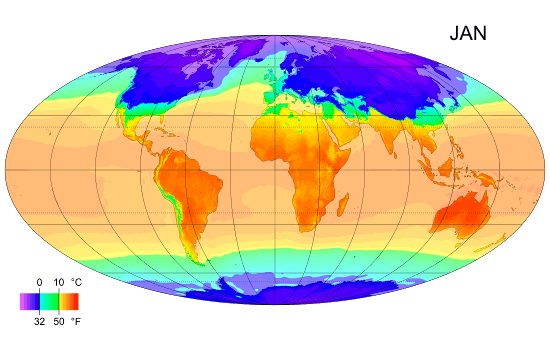Heatstroke is an important condition to know about that can happen when your body overheats and can’t cool down.
What is heatstroke
Heatstroke occurs when the body overheats to an extreme level, leading to a malfunction in its cooling system. Unlike heat exhaustion, which is less severe and typically involves heavy sweating and feeling faint, heatstroke is a critical condition where the body’s temperature regulation fails entirely. In essence, it’s like your body’s internal thermostat going haywire, potentially causing damage to vital organs and even proving fatal if not treated promptly.
Symptoms
To recognise heat stroke before it escalates, keep an eye out for key warning signs. Kids should be aware of symptoms such as hot, dry skin, confusion, rapid heartbeat, dizziness, and nausea. These symptoms occur when the body’s internal temperature regulation system becomes overwhelmed by the heat. When the body can’t cool down efficiently through sweating, it leads to dehydration and a rise in core body temperature. This, in turn, triggers a cascade of physiological responses, including confusion and an elevated heart rate, as the body struggles to cope with the heat stress.
Keeping yourself hydrated, wearing lighter clothes and using sunscreen is the most common action to beat the heat.
The sun is strongest between 10 am and 4 pm, so plan outdoor activities for the cooler parts of the day, like early mornings or evenings.
Expert advice
We spoke to Prof. Dr. P. Saravanakumar, MD, DNB Pediatrics, PhD, who has been an expert in the field for 17 years. Dr. Saravanakumar’s insights into heatstroke prevention and management are invaluable, particularly during the hot summer months when children are most vulnerable.
While children love playing outside during vacations, they can easily forget to stay hydrated in the heat. This can lead to dehydration, which is the loss of water in the body. Dr. Saravanakumar warns that dehydration can cause:
- Excessive thirst and dry mouth
- Headache and nausea
- Muscle cramps and rashes
- Difficulty breathing (in some cases)

“The first step always when about to get a heatstroke is to take the child to a cool place and drink cold water, lower the body temperature.”Dr. Saravanakumar MD, DNB Pediatrics, PhD
Cold treats and summer changes can worsen dehydration
Dr. Saravanakumar highlights that while children may crave cold drinks and ice cream to quench their thirst, these sugary treats don’t effectively rehydrate them. He emphasises that these choices, along with changes in summer eating habits (like consuming more outside food), can lead to:
Upper respiratory infections: Cold drinks can irritate the throat, potentially increasing susceptibility to coughs, colds, and even tonsillitis.
Stomach problems: Unfamiliar outside food or excessive watermelon consumption in some children can cause stomach aches and diarrhoea, further contributing to dehydration.

Why children are more susceptible to heatstroke
“Body wise, children have more surface area to their body mass than adults. So because the surface area is very high and their skin texture is also softer and thinner, these make the children have a higher risk of exhaustion, sweating, excess evaporation, when compared to adults.”
Higher surface area to body mass ratio
Compared to adults, children have more skin exposed relative to their body size. This larger surface area allows them to heat up faster and lose heat slower.
Research indicates that children sweat less overall than adults, limiting their ability to cool down through sweating, which puts them at a greater risk of overheating. Additionally, their developing bodies have a less efficient system for dissipating heat compared to adults. These factors combine to make children more susceptible to heat-related illnesses, underscoring the importance of proactive measures to prevent heatstroke and ensure their well-being during hot weather.
Taking action
Dr. Saravanakumar outlines the crucial steps to take if you suspect heatstroke in a child:
- Cool the child down: Move them to a shaded or air-conditioned area. Offer cool fluids (not too cold) to drink.
- Evaporative cooling: You can use the evaporation method to further lower their body temperature. This involves using cool, damp cloths or towels on the child’s skin while gently fanning them. Ice packs on the groin, neck, and armpits can also be helpful.
- Seek medical attention: Immediately take the child to a doctor or emergency room.
Stay alert: Monitor the child’s alertness and continue offering fluids orally if they are awake and responsive.
Hydration is key
While there’s no one-size-fits-all water intake recommendation, here’s a general guideline:
Children under 5 years: Aim for 820 ml to 1 litre of fluids per day.
Children up to 13 years: Around 3 litres of fluids per day.
It’s important to offer fluids throughout the day, not just when a child feels thirsty. Water is ideal, but juices and milk can also contribute to hydration. Remember, electrolyte balance is important, so consider incorporating options with some sodium content.
“One interesting pattern observed for the past few years is that earlier heat stroke cases would come only during summer seasons but now it may come any time of the year. This might be an effect of climate change as well. There have been more recent cases of heat exhaustion,” said Dr Saravanakumar



